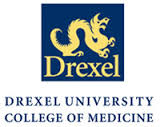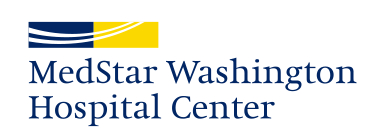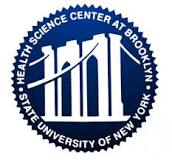AngelMed for Early Recognition and Treatment of STEMI
| Status: | Completed |
|---|---|
| Conditions: | Cardiology |
| Therapuetic Areas: | Cardiology / Vascular Diseases |
| Healthy: | No |
| Age Range: | 21 - Any |
| Updated: | 4/17/2018 |
| Start Date: | December 2008 |
| End Date: | May 17, 2017 |
A prospective, randomized multicenter study of subjects with a high-risk of having a
myocardial infarction (MI) due to acute coronary syndrome or bypass surgery. There is no
differential intervention administered to the two arms of the ALERTS Study. The study
evaluates whether or not a patient alarm from the Guardian System will provide benefit (e.g.
shorten pre-hospital delay) compared to symptoms-only ER presentation in the event of a heart
attack. An amendment to the data analysis protocol was collaboratively created by AngelMed
and FDA, and was adopted by AngelMed on 4/22/2017.
myocardial infarction (MI) due to acute coronary syndrome or bypass surgery. There is no
differential intervention administered to the two arms of the ALERTS Study. The study
evaluates whether or not a patient alarm from the Guardian System will provide benefit (e.g.
shorten pre-hospital delay) compared to symptoms-only ER presentation in the event of a heart
attack. An amendment to the data analysis protocol was collaboratively created by AngelMed
and FDA, and was adopted by AngelMed on 4/22/2017.
There are over one million acute myocardial infarctions (AMI) each year in the United States
with more than 400,000 of these resulting in death. Early identification of AMI, and prompt
treatment has been shown to significantly improve clinical outcomes. Experimental and
clinical studies have shown that most of the irreversible damage to the myocardium occurs
during the first two hours after coronary occlusion. Milavetz et al. demonstrated that
successful reperfusion therapy within two hours was associated with the greatest degree of
myocardial salvage. According to Boersma, et al., restoration of flow, regardless of the
method used, can abort infarction within the first 30 minutes after coronary occlusion, and
the benefit of fibrinolytic therapy compared with placebo is considerably higher in patients
treated within 2 hours after symptom onset than in those treated later.2 Further, evidence
exists that expeditious restoration of flow in the obstructed infarct artery after the onset
of symptoms in patients with the most severe type of MI, ST elevation MI (STEMI) is a key
determinant of short and long-term outcomes regardless of whether reperfusion is accomplished
by fibrinolysis or percutaneous coronary intervention (PCI). Therefore, the early arrival at
the hospital for a reliable diagnosis and initiation of treatment is paramount to improve the
outcomes of myocardial infarction. However, despite efforts at educating the public over the
past decade, the mean time from AMI symptom onset to arrival at a hospital for treatment has
remained, disappointingly, at 2.5-3.0 hours.
The largest proportion of the total pre-hospital delay is the interval between the onset of
symptoms and the decision to seek medical treatment. Finnegan et al. described that the
reasons for delay in seeking medical evaluation generally stem from patient misconceptions
about symptom experience, expectations, and attribution. In many cases, patients expect the
type of heart attack that they often see in movies or on television: the kind of crushing
chest pain that drops a person to the ground. The reality is that many heart attacks are much
"quieter," causing only mild chest pain or discomfort or other symptoms such as shortness of
breath or diaphoresis.
If patients would take action during the first hour following symptom onset, many lives and
significant cost could be saved. It is technically possible to monitor EKGs and detect an
acute infarction, even if the patient is unaware that he or she is experiencing a heart
attack. However, currently available systems have limitations in the home environment. Twelve
lead EKG systems require a clinically trained individual to place them. Holter monitors
suffer from limitations in the ability to detect ST deviation due to low compliance and are
limited in practice to 24 to 72 hours of monitoring. Systems using surface leads are all
subject to noise and other artifacts from patient movement and body orientation, particularly
if the patient is ambulatory.
A potentially ideal solution is to implant a device that measures heart signals from inside
the heart and will alert the patient when it detects electrogram characteristics set by the
physician as worthy of medical evaluation.
with more than 400,000 of these resulting in death. Early identification of AMI, and prompt
treatment has been shown to significantly improve clinical outcomes. Experimental and
clinical studies have shown that most of the irreversible damage to the myocardium occurs
during the first two hours after coronary occlusion. Milavetz et al. demonstrated that
successful reperfusion therapy within two hours was associated with the greatest degree of
myocardial salvage. According to Boersma, et al., restoration of flow, regardless of the
method used, can abort infarction within the first 30 minutes after coronary occlusion, and
the benefit of fibrinolytic therapy compared with placebo is considerably higher in patients
treated within 2 hours after symptom onset than in those treated later.2 Further, evidence
exists that expeditious restoration of flow in the obstructed infarct artery after the onset
of symptoms in patients with the most severe type of MI, ST elevation MI (STEMI) is a key
determinant of short and long-term outcomes regardless of whether reperfusion is accomplished
by fibrinolysis or percutaneous coronary intervention (PCI). Therefore, the early arrival at
the hospital for a reliable diagnosis and initiation of treatment is paramount to improve the
outcomes of myocardial infarction. However, despite efforts at educating the public over the
past decade, the mean time from AMI symptom onset to arrival at a hospital for treatment has
remained, disappointingly, at 2.5-3.0 hours.
The largest proportion of the total pre-hospital delay is the interval between the onset of
symptoms and the decision to seek medical treatment. Finnegan et al. described that the
reasons for delay in seeking medical evaluation generally stem from patient misconceptions
about symptom experience, expectations, and attribution. In many cases, patients expect the
type of heart attack that they often see in movies or on television: the kind of crushing
chest pain that drops a person to the ground. The reality is that many heart attacks are much
"quieter," causing only mild chest pain or discomfort or other symptoms such as shortness of
breath or diaphoresis.
If patients would take action during the first hour following symptom onset, many lives and
significant cost could be saved. It is technically possible to monitor EKGs and detect an
acute infarction, even if the patient is unaware that he or she is experiencing a heart
attack. However, currently available systems have limitations in the home environment. Twelve
lead EKG systems require a clinically trained individual to place them. Holter monitors
suffer from limitations in the ability to detect ST deviation due to low compliance and are
limited in practice to 24 to 72 hours of monitoring. Systems using surface leads are all
subject to noise and other artifacts from patient movement and body orientation, particularly
if the patient is ambulatory.
A potentially ideal solution is to implant a device that measures heart signals from inside
the heart and will alert the patient when it detects electrogram characteristics set by the
physician as worthy of medical evaluation.
Inclusion Criteria:
- Subject has at least one of the following conditions:
1. Diabetes (Type I or Type II)
2. Compromised renal function (Cr > 1.2 mg/dl or creatinine clearance less than 50)
3. TIMI Risk Score ≥ 3
- Presents (within past 6 months) with a high-risk acute coronary syndrome (e.g.,
Unstable Angina, STEMI or NSTEMI) or has undergone or is scheduled for CABG within 6
months of implantation.
- Has already undergone coronary angiography and revascularization, unless the physician
determines it is appropriate to implant before or during the planned procedure.
- Lives in a geographic area in close proximity (within 60 minutes by EMS) to any
hospital that can treat AMI.
- Subjects (men or women) at least 21 years of age. Women of childbearing age must have
a negative pregnancy test or confirmation of one of the following:
1. Post-menopause or amenorrheic during the past year
2. Surgical sterilization
3. Use of effective contraceptive method
Exclusion Criteria:
- In the investigator's opinion, subject lacks ability to respond appropriately to
alarms, e.g., illiteracy, poor memory or cognitive function, dementia or other
condition affecting memory function, etc.
- There is known compromised tissue at the site of lead implantation in the apex of the
right ventricle, e.g., prior infarct affecting the RV apex location.
- A permanent pacemaker or ICD is already in place or the patient is indicated for ICD
or pacemaker implantation based on the guidelines published by the American College of
Cardiology as Class I and IIa recommendations. Class IIb recommendations are at the
investigator's discretion.
- Subject cannot feel the IMD vibration when placed on top of the skin on the left
pectoral side of the chest.
- Subject has recurrent or persistent atrial fibrillation.
- Subject has recurrent or persistent non-sinus cardiac rhythm, second or third degree
atrioventricular blocks, QRS duration greater than 120 ms, Benign Early Repolarization
(BER), or Brugada Syndrome.
- Subject has left ventricular hypertrophy evidenced by EKG criteria.
- Subject has any condition preventing the subcutaneous implantation of the Guardian
System in a left pectoral pouch, such as: superior vena cava thrombosis, subcutaneous
tissue deemed inappropriate for the procedure or prior central venous access via
portacath, Hickman, Groshong, or similar placed in a left pectoral location or left
side PICC line.
- Subject has extremely heavy alcohol consumption (participates in binge drinking that
leads to alcohol intoxication) or has history of alcohol or illicit drug abuse within
past 5 years.
- There is evidence of unresolved infection (fever > 38° C and/or leukocytosis >
15,000).
- Subject has history of bleeding disorders or severe coagulopathy (platelets < 100,000
plts/ml; APTT or PT > 1.3 x reference range).
- Subject has had a hemorrhagic stroke or transient ischemic attack (TIA) in the past 6
months.
- Subject has other severe diseases, such as cancer or refractory congestive heart
failure, associated with limitation of life expectancy (less than 1 year), which may
lead to inadequate compliance to the protocol or confusing data interpretation.
- Subject has clinical conditions such as heart diseases, difficult-to-control blood
pressure, difficult-to-control insulin-dependent diabetes or serious prior infections
attributed to the diabetes, or others that, at the investigator's discretion, could
seriously affect the subject's current clinical condition during study procedures.
- Subject has previous participation in the DETECT Study, current participation or
previous participation in another drug or device study in the past 30 days that
conflicts with this study as determined by the study sponsor.
- Subject has experienced gastro-intestinal hemorrhage in the past 6 months.
- Subject has any situation in which the use of aspirin is contraindicated for at least
6 months.
- Subject has epilepsy.
- Subject has known severe allergies, e.g., peanut, bee sting, etc.
We found this trial at
94
sites
Geisinger Medical Center Since 1915, Geisinger Medical Center has been known as the region’s resource...
Click here to add this to my saved trials
SUNY Downstate Medical Center Formally known as The State University of New York Health Science...
Click here to add this to my saved trials
Holy Cross Hospital While spirituality plays an essential role in the way that we minister...
Click here to add this to my saved trials
Medical Center of Central Georgia Navicent Health is a designated Level I Trauma Center and...
Click here to add this to my saved trials
University of Miami A private research university with more than 15,000 students from around the...
Click here to add this to my saved trials
Click here to add this to my saved trials
Click here to add this to my saved trials
Click here to add this to my saved trials
Click here to add this to my saved trials
University of Maryland Medical Center Founded in 1823 as the Baltimore Infirmary, the University of...
Click here to add this to my saved trials
Click here to add this to my saved trials
Click here to add this to my saved trials
Click here to add this to my saved trials
Click here to add this to my saved trials
Click here to add this to my saved trials
Click here to add this to my saved trials
Click here to add this to my saved trials
Click here to add this to my saved trials
Click here to add this to my saved trials
Click here to add this to my saved trials
Click here to add this to my saved trials
Click here to add this to my saved trials
Click here to add this to my saved trials
Click here to add this to my saved trials
Click here to add this to my saved trials
Click here to add this to my saved trials
Click here to add this to my saved trials
Click here to add this to my saved trials
Click here to add this to my saved trials
Click here to add this to my saved trials
Click here to add this to my saved trials
Genesys Regional Medical Center Genesys Health System, a member of Ascension Health, is a group...
Click here to add this to my saved trials
Click here to add this to my saved trials
Click here to add this to my saved trials
Click here to add this to my saved trials
Click here to add this to my saved trials
Click here to add this to my saved trials
Click here to add this to my saved trials
Borgess Medical Center At Borgess, healing is our calling. This is the place where people...
Click here to add this to my saved trials
Click here to add this to my saved trials
Lancaster General Hospital For more than a century, Lancaster General Hospital has been a leader...
Click here to add this to my saved trials
Click here to add this to my saved trials
Click here to add this to my saved trials
Central Baptist Hospital Located in Lexington, Ky., Baptist Health Lexington offers some of the most...
Click here to add this to my saved trials
Click here to add this to my saved trials
Click here to add this to my saved trials
Click here to add this to my saved trials
Click here to add this to my saved trials
Click here to add this to my saved trials
Click here to add this to my saved trials
Click here to add this to my saved trials
Click here to add this to my saved trials
Click here to add this to my saved trials
Click here to add this to my saved trials
Click here to add this to my saved trials
Click here to add this to my saved trials
Click here to add this to my saved trials
Columbia University Medical Center Situated on a 20-acre campus in Northern Manhattan and accounting for...
Click here to add this to my saved trials
Click here to add this to my saved trials
Click here to add this to my saved trials
Click here to add this to my saved trials
Click here to add this to my saved trials
Click here to add this to my saved trials
Click here to add this to my saved trials
Click here to add this to my saved trials
Click here to add this to my saved trials
2900 W Queen Ln
Philadelphia, Pennsylvania 19129
Philadelphia, Pennsylvania 19129
(215) 991-8100

Drexel University College of Medicine Drexel University College of Medicine represents the consolidation of two...
Click here to add this to my saved trials
Click here to add this to my saved trials
Click here to add this to my saved trials
Click here to add this to my saved trials
Click here to add this to my saved trials
Click here to add this to my saved trials
Click here to add this to my saved trials
2315 Stockton Blvd.
Sacramento, California 95817
Sacramento, California 95817
(916) 734-2011

University of California, Davis Medical Center UC Davis Medical Center serves a 65,000-square-mile area that...
Click here to add this to my saved trials
Click here to add this to my saved trials
Click here to add this to my saved trials
Click here to add this to my saved trials
Click here to add this to my saved trials
Click here to add this to my saved trials
Click here to add this to my saved trials
Stony Brook University Medical Center Stony Brook Medicine expresses our shared mission of research, clinical...
Click here to add this to my saved trials
Click here to add this to my saved trials
Click here to add this to my saved trials
Click here to add this to my saved trials
Click here to add this to my saved trials
University of Toledo The University of Toledo is one of 14 state universities in Ohio....
Click here to add this to my saved trials
Click here to add this to my saved trials
Click here to add this to my saved trials
Click here to add this to my saved trials
Click here to add this to my saved trials
110 Irving St NW
Washington, District of Columbia 20010
Washington, District of Columbia 20010
(202) 877-7000

Washington Hosp Ctr MedStar Washington Hospital Center is a not-for-profit, 926-bed, major teaching and research...
Click here to add this to my saved trials
Click here to add this to my saved trials
Click here to add this to my saved trials
Click here to add this to my saved trials












